Tudors
What it was like to live in Kirklees during the Tudor period
The de Laci family owned the manor of Huddersfield until 1322, when it became the property of the Crown. In 1599, Huddersfield was no more than a small Pennine village. It had its own parish, but the local market, corn mill and fulling mill were all in Almondbury. All the major roads converged in Almondbury too.
William Ramsden bought the Manor of Huddersfield from Queen Elizabeth I in 1599, paying £956 0s 9d (around £164,000 in todays money). Their story in Huddersfield began in 1531, when William Ramsden married Joanna Wade of Longley. In doing this he acquired her family's great wealth, and they moved into Longley Hall in 1577.
The Ramsden family shaped all aspects of Huddersfield's development for 400 years. From 1531 they expanded their wealth and influence through the acquisition of land from monasteries recently dissolved under Henry VIII.
The prominent Kaye family lived at Woodsome Hall. John and Dorothy Kaye had 15 children, 10 of whom lived to adulthood. John wrote a verse for their portrait (now in Tolson Museum), and described her role as "To live at home in housewifery, to order well my family, to see they live not idly, to bring up children virtuously, to relieve poor folks willingly, this is my care with modesty, to lead my life in honesty".
Further north, Oakwell Hall was built by the Batt family is 1583. The Batt family had acquired their fortune through business interests in Halifax in previous centuries, and when it was built it dominated the landscape and established the Batts as one of the area's leading gentry families.
Life in Tudor Britain was harsh - the average life expectancy was just 35 years. Most Tudor people lived in the countryside and made their living from farming. Due to the poverty of the hilly land, local people found it difficult to produce sufficient food to support the growing population, and from early days the conversion of wool to cloth supplemented their incomes. This was helped by a plentiful supply of wool and fast-running streams of soft water necessary for cloth production. For centuries the industry was based in people's homes or in small mills on upland stream.
What to expect in the box
The acorn on the handle was a symbol of immortality, and seen as a remedy against cholera. This was the most common type of pewter spoon.
Pewter and silver spoons were made for the wealthy. However, it was quite weak so could only be used for lifting food from a plate, rather than cutting through meat.
The elite enjoyed a wide variety of food, and could eat up to 5,000 calories a day! This included imported food, including citrus fruits, almonds, olive oil, sugar and spices.
Although knives and spoons were very common, forks were not!
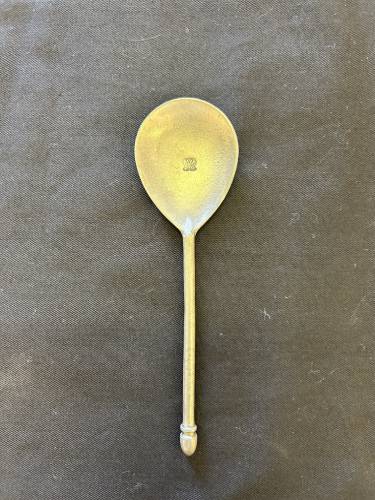
Almost all documents during the Tudor period were closed with seals, both to ensure that they would not be read before they reached the intended recipient and to identify the sender.
Most seals had a picture of the owner and a motto around the edge.
This is known as the 'Great Seal', and it belonged to Elizabeth I. It was attached to all the important written documents she authorised.
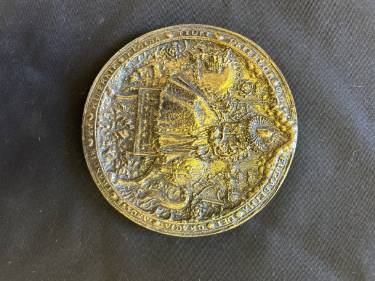
A glazed earthenware container used as a small, portable bank for collecting and saving money.
These sturdy, small pots were commonly used by Elizabethan theatres to collect ticket earnings.
Money would be retrieved from the full money box by breaking it open and destroying the pot.
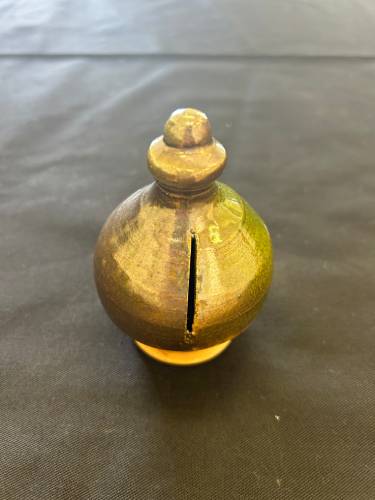
Rosary beads are a way to count the number of prayers said. They were very common in England as people believed that if you said more prayers, you would spend less time in purgatory (a place where punishment for sin was carried out after death).
This was the type of practice Henry VIII wanted to abolish when he broke with the Catholic Church in 1536. After this time, their use declined.
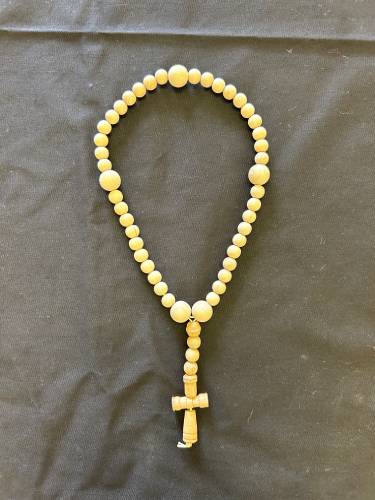
An earthenware bowl in typical 'Tudor Green Ware' style. These green colours were made by the use of powdered copper in the glaze mix, and sometimes lead would be added which would make the green colour brighter.
Common in towns, but rare in the countryside, where only the richer inhabitants would likely have used them.

Shell fish including crab, oysters, mussels and cockles were featured heavily in Elizabethan recipes.
Meat, fishes and poultry were cooked in varied ways as well. Some of the more common methods were spit, roasting, baking, boiling, smoking, salting and frying.
Seafood was cheap in villages and towns on the coast or near rivers but was a luxury only for the rich in inland areas.
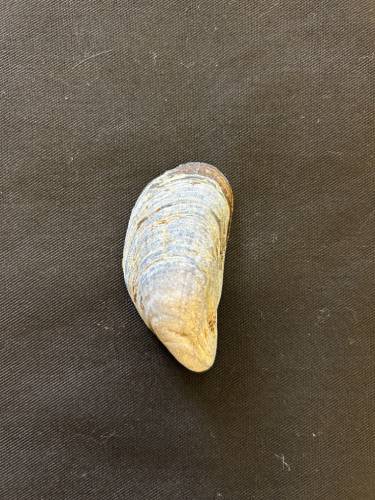
This flagon would be used to hold liquids, probably ale or wine. It would be set on a table so it could be shared among guests.
Hosting banquets and celebrations was an important part of elite life in Tudor England. There were rules about where guests could sit, the food they ate, and the order of service.
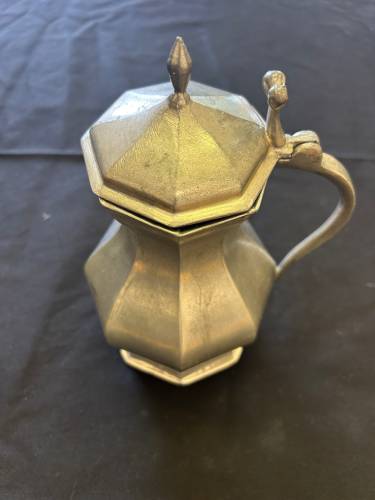
Pewter and silver plates were made for the more wealthy members of society, but provided an affordable alternative to real silver for members of the yeoman class. It could even be polished to look like real silver!
It has a deep rim to prevent food from spilling over the edge.
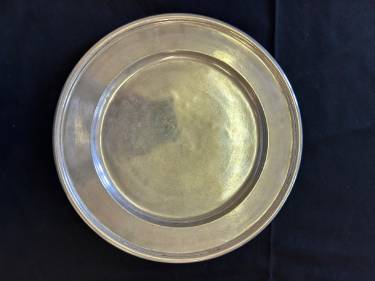
A pendant would usually be worn like a charm on the body to protect the wearer.
Featuring symbols or writing, they made people feel connected to the natural world, and were used to ward off evil spirits.
This one features a man and a religious symbol, and is a replica of a pendant found in the Mary Rose ship wreck.
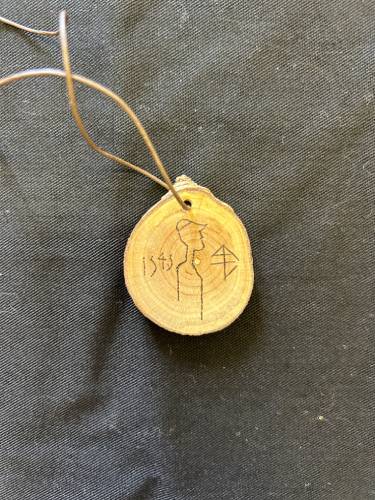
The Tudors enjoyed increased leisure time, and used it playing games and sports. Sports enjoyed by the rich included tennis and jousting, whilst the poor enjoyed football.
However, in 1541, Henry VIII wanted his subjects to focus on archery instead, so made games and sports illegal! Unless you were rich, you could only play during the twelve days of Christmas.
Cards and dice games were enjoyed by all members of society, and often included gambling too. Between 1529 and 1532, Henry VIII lost £3243 5s 10d to gambling, around £1.5 million in today's money.
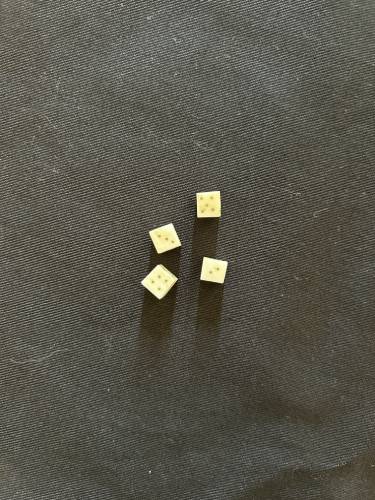
The year 1489 saw major changes in the English coinage by Henry VII, the first gold pound was introduced, showing the king majestically enthroned, and became known as the 'sovereign', alongside which a more simplistic version appeared on the pennies.
It was during this time monarchs began to use side profiles, rather than facing bust portraits, on coins. During the reign of Edward VI, coins also began to include dates.
In 1551, the crown, half crown and sixpence were struck in silver.
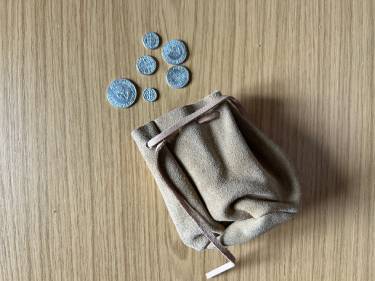
Horn was the Tudor equivalent of plastic, and was very useful as it is light, hard wearing, and difficult to break. It was commonly used to make household objects and jewellery, and very thin sheets were used in lanterns and windows, as they kept the wind out but let light in.
This plain beaker is of the kind used by poorer people, a rich man's horn beaker would have had a silver rim and base, and perhaps have carved decoration.
The Tudors used horn from cows, rams and deer. Animal horn is partly gelatine, and becomes very malleable once it has been softened in boiling water. Once soft, it can be flattened, separated into layers, moulded to shape, and trimmed. It is polished after becoming hard again.

Spoons made from animal horn were inexpensive, so were used by the poor.
Meat became cheaper during the Tudor period, so the average family could afford it. However, without refrigerators it was hard to keep fresh, so animals had to be killed just before they needed to be eaten.
Poorer people would also eat a soup, called pottage, served with bread. It was made of peas, milk, egg yolks, breadcrumbs and parsley.
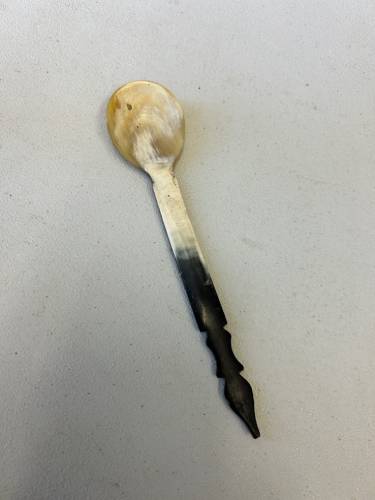
This wooden platter is an early type of plate. The word trencher comes from the old French word 'tranchier', meaning 'to cut'.
Trenchers were originally pieces of 4 day old bread, cut into a square shape, upon which food could be placed before being eaten. The bread trenchers were put on wood (low status people) or silver platters (high status people), and the name trencher began to be used for the platter.
Large trenches would be used for food, and smaller ones to hold salt, which was very expensive in Tudor times.
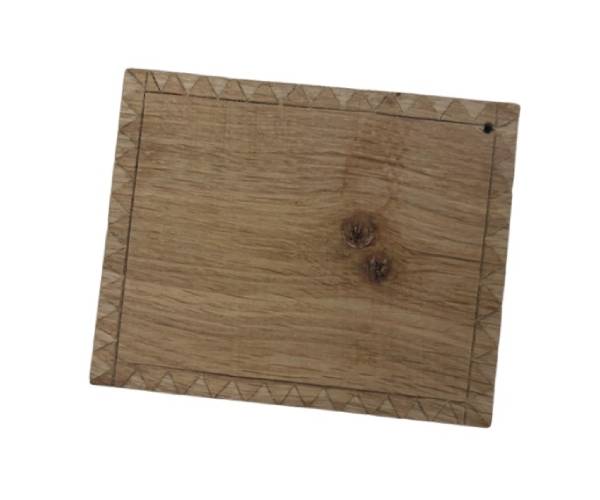
Hornbooks were used to help children to learn the English language. It would be made out of wood, and the face would have paper pasted onto it, displaying the alphabet and the Lord's Prayer. A thin layer of horn would help to protect the page. Tudor children learnt to read fully, before being taught writing.
In Tudor England you had to pay to go to school, so only the wealthy could afford this. Rich boys would go to school, whilst rich girls were educated at home. Poor children were expected to work instead, but all boys were able to attend Sunday schools.
Schools for rich children were open six days a week, from 6AM - 5PM. Some 'Petty Schools' had shorter hours so poorer boys could attend and then go to work.
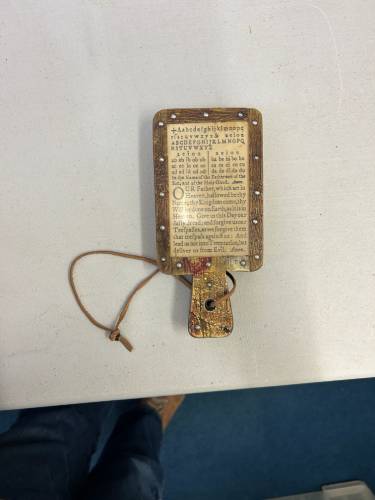
In 1575, Christopher Saxon was asked by the Privy Council to map the counties in England and Wales.
This is the first full map of Yorkshire ever produced, and shows large towns as collections of buildings. The most prominent city, York, is depicted by York Minster.
These maps had an administrative and defensive role; areas on the coast received particular attention due to the threat of naval attack during Elizabeth I's reign.
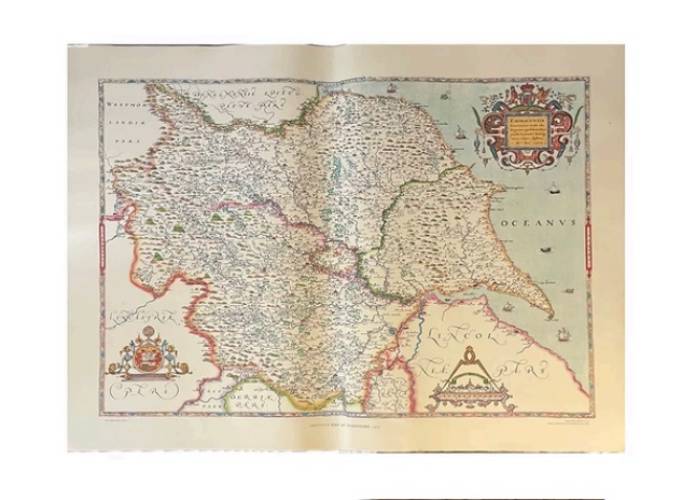
Around 30% of Tudor society were under the age of 16, and children were well-cared for and loved by their parents and wider communities. However, childhood was short, and poorer children were expected to be working from 8 years old. For the rich, they would be learning to be gentlemen and wives by this age.
Children played with metal rattles, figurines and dolls houses. The cup and ball was a popular Tudor game, and played by children from all social classes.
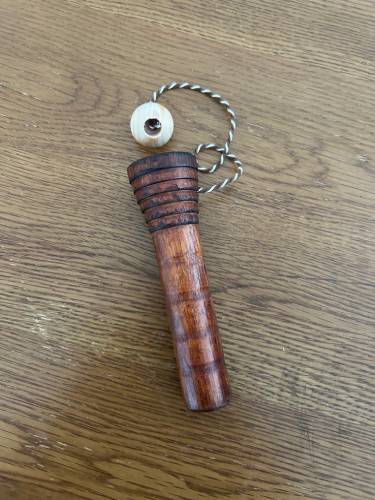
During the Tudor period, doctors used herbal remedies to treat many illnesses. Some examples include:
- Headaches: A mixture of lavender, marjoram, and sage was used to treat headaches.
- Stomach aches: Chamomile was used to treat stomach aches.
- Colds and fevers: Feverfew was used to treat colds and fevers.
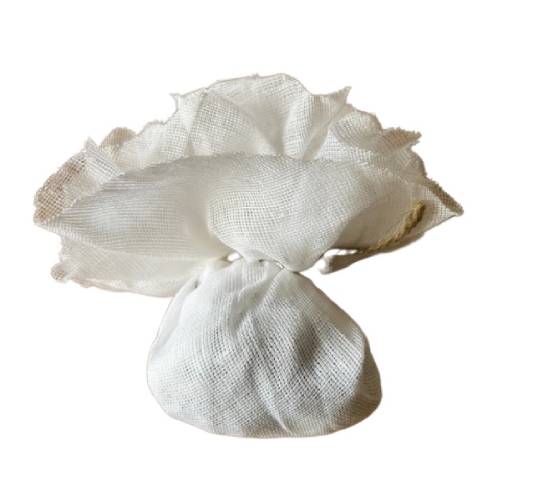
Explore the following themes using the objects
- Politices
- Economy
- Beliefs and religion
- Diet
- Health
- Leisure
- Rich and poor
- Childhood
The acorn on the handle was a symbol of immortality, and seen as a remedy against cholera. This was the most common type of pewter spoon.
Pewter and silver spoons were made for the wealthy. However, it was quite weak so could only be used for lifting food from a plate, rather than cutting through meat.
The elite enjoyed a wide variety of food, and could eat up to 5,000 calories a day! This included imported food, including citrus fruits, almonds, olive oil, sugar and spices.
Although knives and spoons were very common, forks were not!

Almost all documents during the Tudor period were closed with seals, both to ensure that they would not be read before they reached the intended recipient and to identify the sender.
Most seals had a picture of the owner and a motto around the edge.
This is known as the 'Great Seal', and it belonged to Elizabeth I. It was attached to all the important written documents she authorised.

A glazed earthenware container used as a small, portable bank for collecting and saving money.
These sturdy, small pots were commonly used by Elizabethan theatres to collect ticket earnings.
Money would be retrieved from the full money box by breaking it open and destroying the pot.

Rosary beads are a way to count the number of prayers said. They were very common in England as people believed that if you said more prayers, you would spend less time in purgatory (a place where punishment for sin was carried out after death).
This was the type of practice Henry VIII wanted to abolish when he broke with the Catholic Church in 1536. After this time, their use declined.

An earthenware bowl in typical 'Tudor Green Ware' style. These green colours were made by the use of powdered copper in the glaze mix, and sometimes lead would be added which would make the green colour brighter.
Common in towns, but rare in the countryside, where only the richer inhabitants would likely have used them.

Shell fish including crab, oysters, mussels and cockles were featured heavily in Elizabethan recipes.
Meat, fishes and poultry were cooked in varied ways as well. Some of the more common methods were spit, roasting, baking, boiling, smoking, salting and frying.
Seafood was cheap in villages and towns on the coast or near rivers but was a luxury only for the rich in inland areas.

This flagon would be used to hold liquids, probably ale or wine. It would be set on a table so it could be shared among guests.
Hosting banquets and celebrations was an important part of elite life in Tudor England. There were rules about where guests could sit, the food they ate, and the order of service.

Pewter and silver plates were made for the more wealthy members of society, but provided an affordable alternative to real silver for members of the yeoman class. It could even be polished to look like real silver!
It has a deep rim to prevent food from spilling over the edge.

A pendant would usually be worn like a charm on the body to protect the wearer.
Featuring symbols or writing, they made people feel connected to the natural world, and were used to ward off evil spirits.
This one features a man and a religious symbol, and is a replica of a pendant found in the Mary Rose ship wreck.

The Tudors enjoyed increased leisure time, and used it playing games and sports. Sports enjoyed by the rich included tennis and jousting, whilst the poor enjoyed football.
However, in 1541, Henry VIII wanted his subjects to focus on archery instead, so made games and sports illegal! Unless you were rich, you could only play during the twelve days of Christmas.
Cards and dice games were enjoyed by all members of society, and often included gambling too. Between 1529 and 1532, Henry VIII lost £3243 5s 10d to gambling, around £1.5 million in today's money.

The year 1489 saw major changes in the English coinage by Henry VII, the first gold pound was introduced, showing the king majestically enthroned, and became known as the 'sovereign', alongside which a more simplistic version appeared on the pennies.
It was during this time monarchs began to use side profiles, rather than facing bust portraits, on coins. During the reign of Edward VI, coins also began to include dates.
In 1551, the crown, half crown and sixpence were struck in silver.

Horn was the Tudor equivalent of plastic, and was very useful as it is light, hard wearing, and difficult to break. It was commonly used to make household objects and jewellery, and very thin sheets were used in lanterns and windows, as they kept the wind out but let light in.
This plain beaker is of the kind used by poorer people, a rich man's horn beaker would have had a silver rim and base, and perhaps have carved decoration.
The Tudors used horn from cows, rams and deer. Animal horn is partly gelatine, and becomes very malleable once it has been softened in boiling water. Once soft, it can be flattened, separated into layers, moulded to shape, and trimmed. It is polished after becoming hard again.

Spoons made from animal horn were inexpensive, so were used by the poor.
Meat became cheaper during the Tudor period, so the average family could afford it. However, without refrigerators it was hard to keep fresh, so animals had to be killed just before they needed to be eaten.
Poorer people would also eat a soup, called pottage, served with bread. It was made of peas, milk, egg yolks, breadcrumbs and parsley.

This wooden platter is an early type of plate. The word trencher comes from the old French word 'tranchier', meaning 'to cut'.
Trenchers were originally pieces of 4 day old bread, cut into a square shape, upon which food could be placed before being eaten. The bread trenchers were put on wood (low status people) or silver platters (high status people), and the name trencher began to be used for the platter.
Large trenches would be used for food, and smaller ones to hold salt, which was very expensive in Tudor times.

Hornbooks were used to help children to learn the English language. It would be made out of wood, and the face would have paper pasted onto it, displaying the alphabet and the Lord's Prayer. A thin layer of horn would help to protect the page. Tudor children learnt to read fully, before being taught writing.
In Tudor England you had to pay to go to school, so only the wealthy could afford this. Rich boys would go to school, whilst rich girls were educated at home. Poor children were expected to work instead, but all boys were able to attend Sunday schools.
Schools for rich children were open six days a week, from 6AM - 5PM. Some 'Petty Schools' had shorter hours so poorer boys could attend and then go to work.

In 1575, Christopher Saxon was asked by the Privy Council to map the counties in England and Wales.
This is the first full map of Yorkshire ever produced, and shows large towns as collections of buildings. The most prominent city, York, is depicted by York Minster.
These maps had an administrative and defensive role; areas on the coast received particular attention due to the threat of naval attack during Elizabeth I's reign.

Around 30% of Tudor society were under the age of 16, and children were well-cared for and loved by their parents and wider communities. However, childhood was short, and poorer children were expected to be working from 8 years old. For the rich, they would be learning to be gentlemen and wives by this age.
Children played with metal rattles, figurines and dolls houses. The cup and ball was a popular Tudor game, and played by children from all social classes.

During the Tudor period, doctors used herbal remedies to treat many illnesses. Some examples include:
- Headaches: A mixture of lavender, marjoram, and sage was used to treat headaches.
- Stomach aches: Chamomile was used to treat stomach aches.
- Colds and fevers: Feverfew was used to treat colds and fevers.





